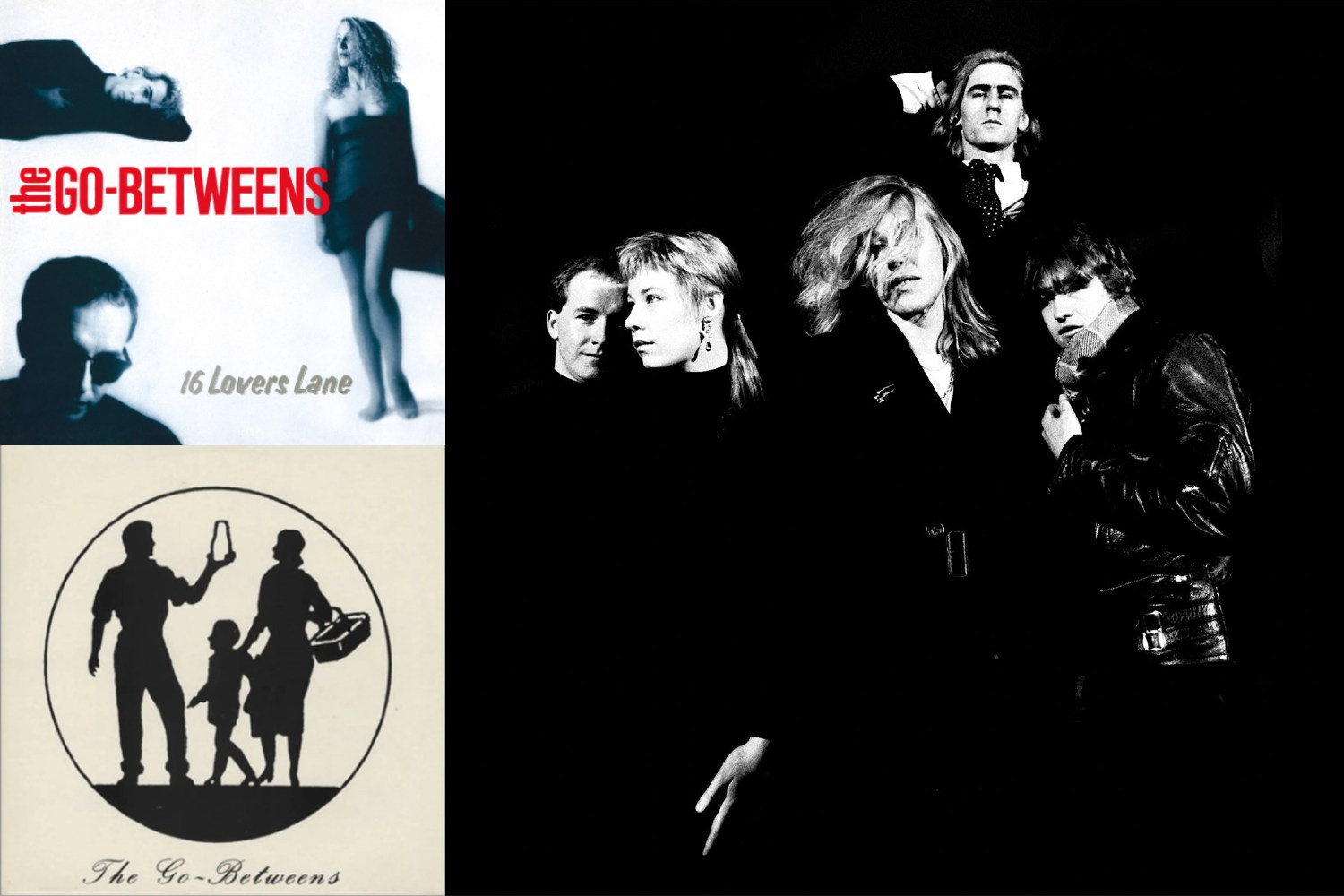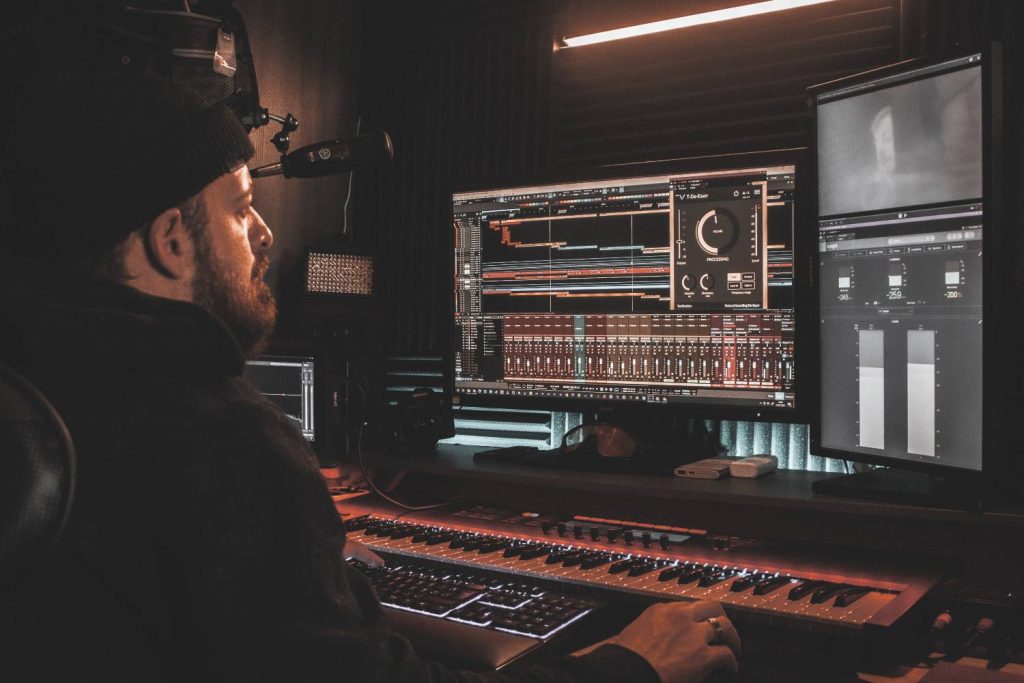Taking you behind the production one of the most underappreciated Aussie songs, 'Streets of Your Town'
The Go-Betweens returned to Australia in late 1987 after five years in England to make 16 Lovers Lane, their sixth album. It was leaving behind dark cold climes, broken promises by record labels, and continual poverty.
Going to Sydney represented sunlight, more money, and commitments from Mushroom in Australia and Beggars Banquet for international, to give them a commercial breakthrough record.
The album was recorded in the summer of 1987/8 with UK record producer Mark Wallis. A Steve Lillywhite protégé, Wallis at the time had worked with Talking Heads, Tom Verlaine, U2, Bauhaus and just had a #1 with The Primitives.
Read all the latest features, columns and more here.
“I think 16 Lovers Lane is very much a summer Sydney album,” guitarist and singer Robert Forster tells Mixdown.
“I can’t imagine it being done really anywhere else. The EMI studio in central Sydney (Studios 301) was world class, and all of it felt comfortable in Sydney. It was the right place to be.”
From this came ‘Streets Of Your Town’ – the song that made The Go-Betweens, and ultimately brought them undone.
The Go-Betweens went into 16 Lovers Lane with a mix of optimism and upheaval. Bassist Robert Vickers had opted not to return to Australia, so they replaced him with John Willsteed in November 1987. Willsteed’s role was described as everything from a disruptor to one creating inspired moments of “chamber-pop”.
He played the guitar solo on ‘Streets Of Your Town’ with a nylon-string classical guitar on an octave pedal, with guitar and bass lines following each other to an ethereal feel. But at the same time, he was never a fan of Lindy Morrison’s drum pattern, a problem when you make up the rhythm section of a band.
Also making a change was Amanda Brown, violinist, guitarist, keyboards, and oboe player, who asserted herself more musically on 16 Lovers Lane since joining in 1986.
As Forster and Morrison’s nine-year relationship ended, Brown and guitarist and singer Grant McLennan became romantically intertwined. Most of his songs on the album were about her.
‘Streets Of Your Town’ was written in their sunny apartment in Bondi Junction. McLennan was working out the construction of The Church’s ‘Under The Milky Way’, one of his favourite songs, and ‘Town’ emerged quickly.
Brown told the Guardian, “It was written in, I would say, 10 minutes. I was singing along and I sung that “shine” line, which is like the call and response answer in the verses. And I don’t collect any songwriting royalties for that song, because that was a condition of my joining the band.”
‘Streets Of Your Town’ came at the eleventh hour during the album’s making. Forster recalls: “Mark Wallis spent a couple of weeks with us in the practice room and he did much shaping and listening when we worked there.
“So by the time we hit the studio, Mark had the album in his head. The sonic landscape, he had it mapped out; he had control in the studio. The way a traditional record producer does.”

McLennan told the producer, “Here’s something I just wrote”. Wallis immediately knew it was the lead single and shaped it for radio. So did the rest of the band when McLennan and Brown played it to them in a park in Glebe.
Wallis was renowned at getting great acoustic guitar sounds, and Studios 301 had the right gear including a 72 channel Neve 88R console and 72 channel SSL K Series consoles.
“Mark liked SSL desks. He had worked in the best UK studios and he was very exact with what he wanted and 301 was up to the job.
“It was a very ’80s set-up – wood panelling and glass doors, a big live room and lots of outboard gear. The weird thing was the location of the studio. On the seventh floor (from memory) of an inner-city multi-storey building. There were offices on floors below and above the studio.”
Playing continuously on the stereo in the pool room during the recording sessions was a new Byrds rarities collection called Never Before, which Forster had just bought, and had the same writing skills and chimes.
Wallis’ approach was for Forster and McLennan to play their guitars around a mic eyeballing each other – how they began when they formed The Go-Betweens in January 1978.
The private school boys met two years earlier – Robert was 19 and Grant was 18 – in the drama department at the University of Queensland, obsessed with film and music. They were listening to the same bands, Robert taught him some chords and they were away. By September 1978 they’d released their first single, ‘Lee Remick’ / ‘Karen’.
Their guitar collection was small. “We weren’t collectors or guitar nerds. Basically we had one acoustic guitar each, and an electric guitar each.
“Originally, back in the late ’70s, we played through Vase amps. They were made in Queensland and were of astounding quality. I had a Fender Telecaster for awhile and Grant had an Ibanez Bass. That was a great sound.”
US country music legends Guy Clark and Rodney Crowell were among their inspirations.
“I saw Guy Clark play a few times and I was watching his hands very closely. Guy was basically a good ’60s-influenced coffee house folk guitarist. There was a little bit of country in there. Some blues licks. And some rock touches.
“I got a little rootsier, I guess, in my playing for awhile there in the early ’90s, late ’80s, and it has stayed with me.”
The rhythm track on ‘Streets Of Your Town”‘was a mix of Morrison’s playing and programmed drums Wallis put together from her work.
Wallis was a massive fan of Morrison’s talents. But her father was dying, so he worked around her availability and the hospital’s visiting hours.
He also got Brown to whisper some of the backing vocals, which she was initially sceptical about seeing it as a pretentious Euro touch.
Forster can’t rate Wallis’ contribution to ‘Streets Of Your Town’ highly enough.
“He was central to it. We could never really play the song as compact and as rich as the recording. It was made with radio in mind, not how easy it would be for the band to perform on stage.
“There is tons of studio wizardry on the track – sonic swirls and clicks that came from Wallis. If you hear other records he’s done, there are lots of his signature touches throughout the song.”
Translating it onto the stage proved a problem. “‘Streets’ was more of a studio creation than a lot of the band’s other recordings were. There is so much production and shine in there from the studio. Like ‘Cattle and Cane’, it was a tricky song to play live. The timing was a bit unusual, requiring a lot of concentration on stage.”
As for Willsteed’s solo, “everyone was very pleased with that. That was a real moment. An exotic touch that worked really well.”
Released in July 1988, ‘Streets Of Your Town’ got radio airplay in Australia and the UK.
The band walked around London’s Soho that summer, and heard it blaring out of cafes and jean shops.
But in the UK it peaked at #80. In Australia it stopped at #68. Its best chart performance was in New Zealand where it went to #30.
Forster muses: “Did I think ‘Streets’ would be a hit? ‘Lee Remick’ and ‘Cattle And Cane’ and ‘Bachelor Kisses’ and ‘Spring Rain’ and ‘Right Here’ hadn’t been hits. So…I wasn’t betting on it.
“When it started to be played on commercial radio, it sounded very competitive and glorious. But it wasn’t a big hit. And people forget this. The record didn’t change the fortunes of the band. But that’s fine. We tried our best.”
“He [Wallis] was devastated, absolutely devastated it didn’t do better. He thought it was the best thing both he and the band had done.”
The fact that he couldn’t explain its lack of chart success was compounded by the fact that the record labels were heavily promoting the single.
Morrison thought any chance of saving the album was curtailed when the wrong follow-up single was chosen, in her eyes.
16 Lovers Lane had great reviews for its performance, production and gorgeous songs like ‘Quiet Heart’, ‘Clouds’, and ‘Devil’s Eye’. But the fact that a hit single had not manifested when it was needed as career step rankled.
By December 1989, after an 18-month world tour, Forster and McLennan announced The Go-Betweens had split and that they were staying an acoustic duo.
Brown was so angry at the news that she terminated her relationship with McLennan.
Forster and McLennan reformed The Go-Betweens in 2000 and recorded three more albums until 2006 when McLennan died of a heart attack on May 6 aged 48.
Thirty-four years on, the debate rages whether ‘Streets of Your Town’ is a Brisbane song or a Sydney song, centred around lines as “They shut it down/ They pulled it down” and “I ride your river under the bridge.”
The arguments are as valid as each other. But Brown points out that the fact that McLennan titled it “your town” rather than “my town” alluded it to her town Sydney.
Check out the story behind one of the most important tracks for Australian music ever, ‘(I’m) Stranded’ by The Saints. More on The Go-Betweens here.







